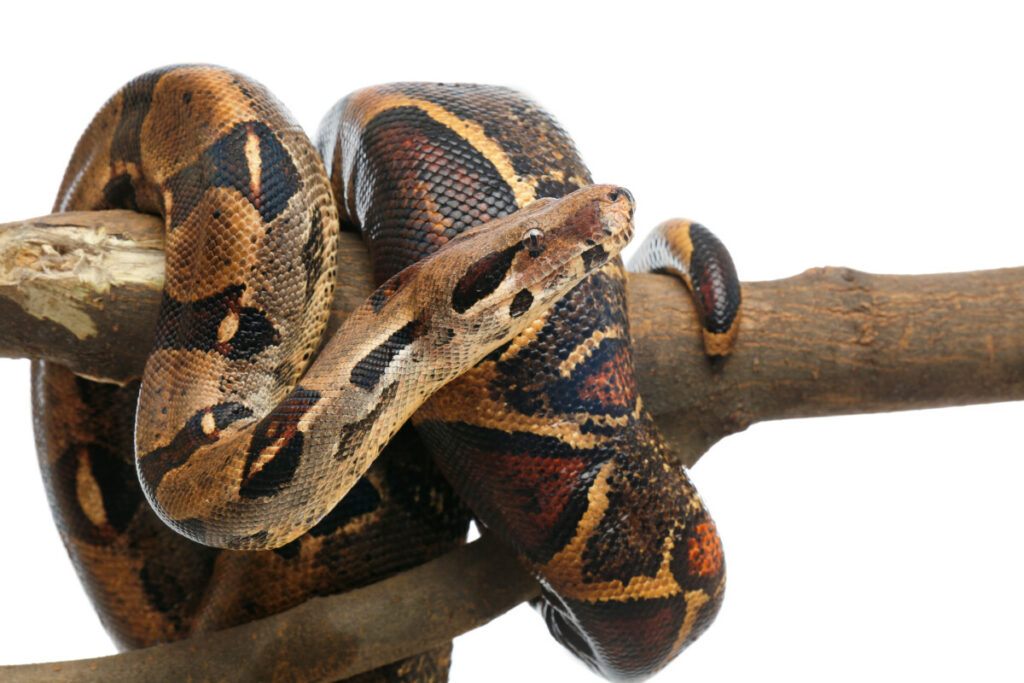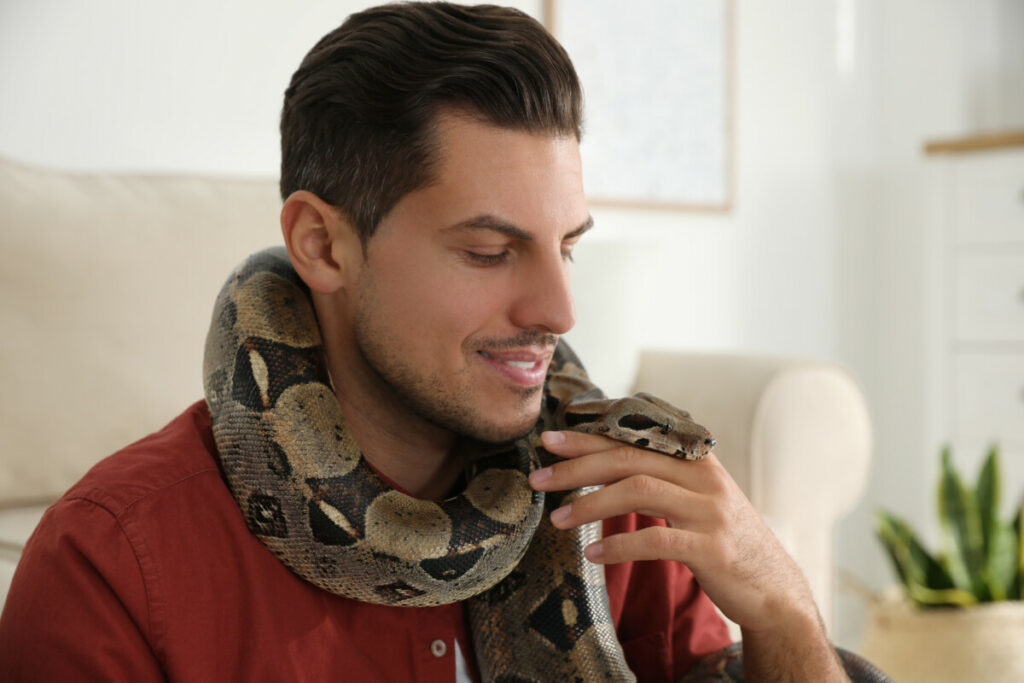
Snakes are interesting and intelligent pets that can be relatively low maintenance. One of the most popular choices for pet snakes is the Boa constrictor. These beautiful snakes can be amazing pets for the right owner. That said, are boa constrictors good for beginners or first-time owners?
The common boa or red-tailed boa is not the best choice for a first-time snake owner. Because they can grow to be over ten feet long, they can be difficult to handle and care for. They are also a long-term commitment, living to be 20-30 years old. A ball python or corn snake would make a better first snake.
If you still have your heart set on a boa constrictor, you should know what you are getting yourself into. Understanding the needs of a Boa constrictor will help you to evaluate whether or not it is the right pet for you. If not, there are other types of snakes that will suit your lifestyle and abilities better.
In addition, though red-tailed boas are the most commonly kept as pets, there are actually many different species of boas. Some species are much smaller than red-tailed boas such as the Rosy Boa or the Dumeril’s boa.
If you are dead set on a boa or python check out my article on best boas and pythons to keep as pets. You might find some options you did not know about. That said, for simplicity’s sake, I will be referring to the red-tailed boa in this article.
Why Boa Constrictors are Not the Best Option for Beginners
Boa constrictors are nocturnal, heavy-bodied snakes from Central and South America. Interestingly, Boas don’t lay eggs, they give birth to live young. Their bodies are rectangular in shape, rather than other species which are round-bodied.
Adult Boa constrictors can grow so large that their keeper simply can’t carry or handle them on their own. Adult females are 6.9-9.8 feet on average, and adult males are 5.9-7.9 feet on average. They typically weigh anywhere from 20-33 pounds or more. Outliers in size can grow over 12+ feet long.
A confident snake lover might think that they will learn how to carry and handle this large snake, but holding 20 or 30 pounds of slithering muscle can be tricky, especially when the snake is trying to go somewhere you don’t want them to go. Boa constrictors need to be handled regularly, or else they can become aggressive.
Boa Constrictors Require A lot Of Food Plenty Of Housing Space
Their large size means that they need a large amount of food, which can be expensive and difficult to obtain. A three-foot Boa can eat two adult rats each week. A five-foot Boa can eat about four rats each week plus cornish chickens and medium rabbits. You can imagine how much more a 10-foot Boa would eat. Many Boa constrictor owners resort to raising birds, rodents, or rabbits for food.
Because of their size, they will also require a large tank and tank heater. The minimum tank size for an adult Boa constrictor would be about 10 square feet. These types of enclosures aren’t sold in pet or animal supply stores, so you would have to build one yourself.
Boa constrictors will escape if they can, so the enclosure must be secure. They also need to be able to submerge themselves completely underwater, so this must be taken into consideration when selecting an enclosure.
When Boa constrictors strike, they can strike from any angle. They are quick and a strike from the Boa can be powerful, and even draw blood.
All of these things put together make Boas constrictors hard snakes to take care of, especially for a first-time snake owner. Don’t get me wrong they are the king of pet snakes according to many keepers. But if you have never owned a snake or have a child that is eager for a first-time snake there are better options to get started with.
Better Options for First Time Snake Owners
If you decide that a Boa is not the best option for you, there are plenty of other species that are just as beautiful but easier to handle and care for.
- Ball Pythons are one of the most popular pet snakes because they are gentle and easy to care for. They are social and low-maintenance snakes that rarely grow longer than five feet and only usually weigh three to four pounds. A 30-gallon tank is suitable for these snakes. They are very beautiful, ranging in scale pattern and color.
- Corn Snakes are another good option for a first-time snake owner. These snakes are typically two to four feet long and live up to 15 years. Corn snakes are thinner and less bulky than the ball python, only weighing two pounds on average.
- The Rosy Boa can make an excellent starter snake and are 24-36 inches long as adults. Rosy boas are usually docile—even in the wild—and are happy in a smaller habitat. They enjoy being handled and babies can be easily obtained from breeders. They usually have light tan skin with red “rosy” stripes going lengthwise down the body.
- Sand Boas are smaller and never get longer than two feet. They are usually orange and dark brown in color and have a unique head shape for burrowing. They are happy in a 10-gallon tank and can live for 15 years or longer.
Best Boa Species For Beginners

If you are still set on getting a Boa constrictor, consider getting a boa species that is a bit smaller. This would include the Hog Island Boa and the Dumeril’s Boa.
Yes, there are the rosy and sand boas previously mentioned but they don’t quite have the same look like the common boa. Hog Island and Dumeril’s boas are a bit smaller than common boas but look more like the red-tailed boas.
It is also important to make sure that your snake is captive-bred. This will ensure that your snake does not have any diseases or behavioral problems. Do research to look into quality breeders near you. Responsibly sourcing your new pet will ensure that you and your new friend will have the best experience possible.
Because these snakes live so long, many of them end up in animal shelters or being mistreated because people aren’t prepared to commit to caring for an animal that long. If you aren’t absolutely sure that you are ready for this type of commitment, then the Boa constrictor isn’t right for you.
